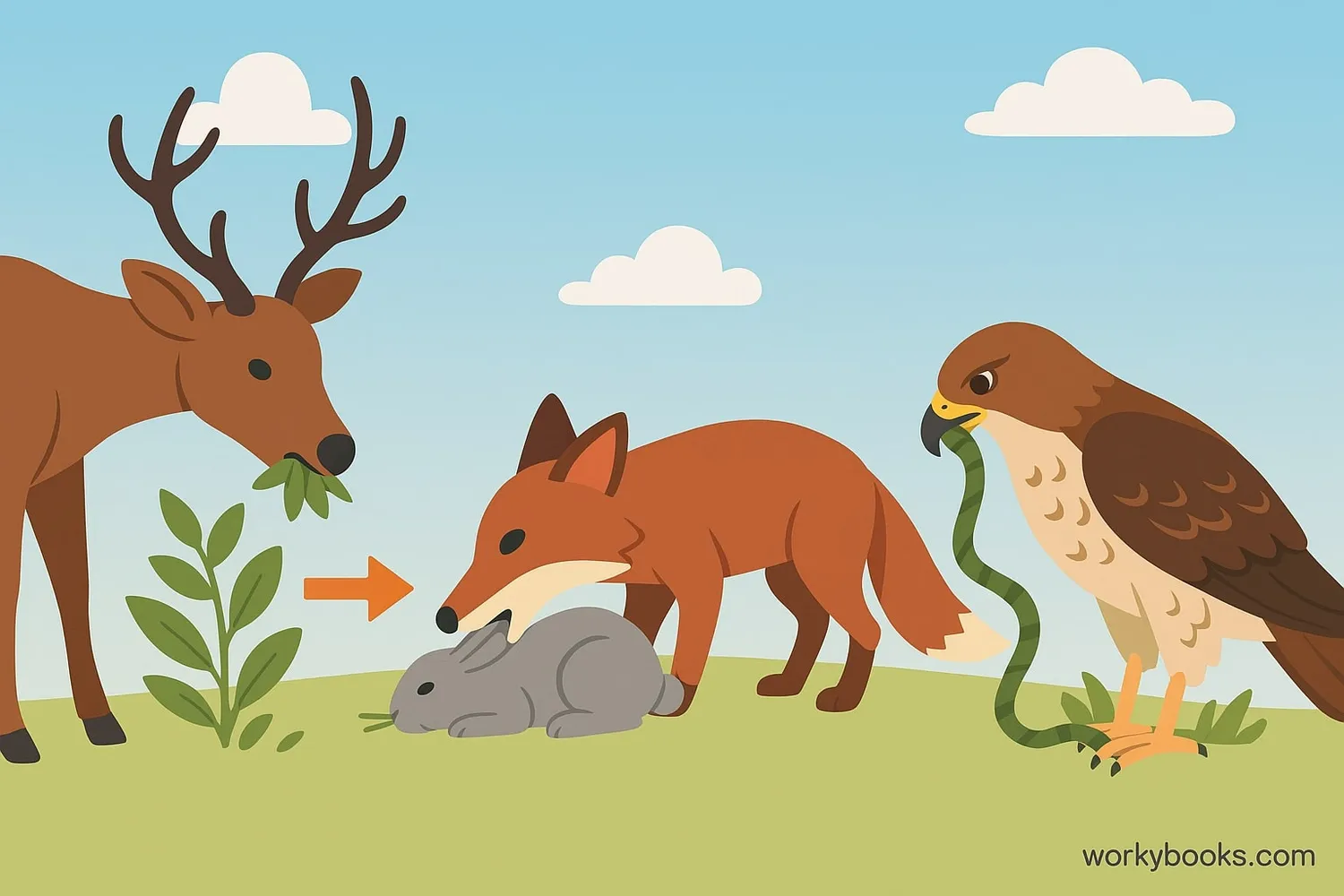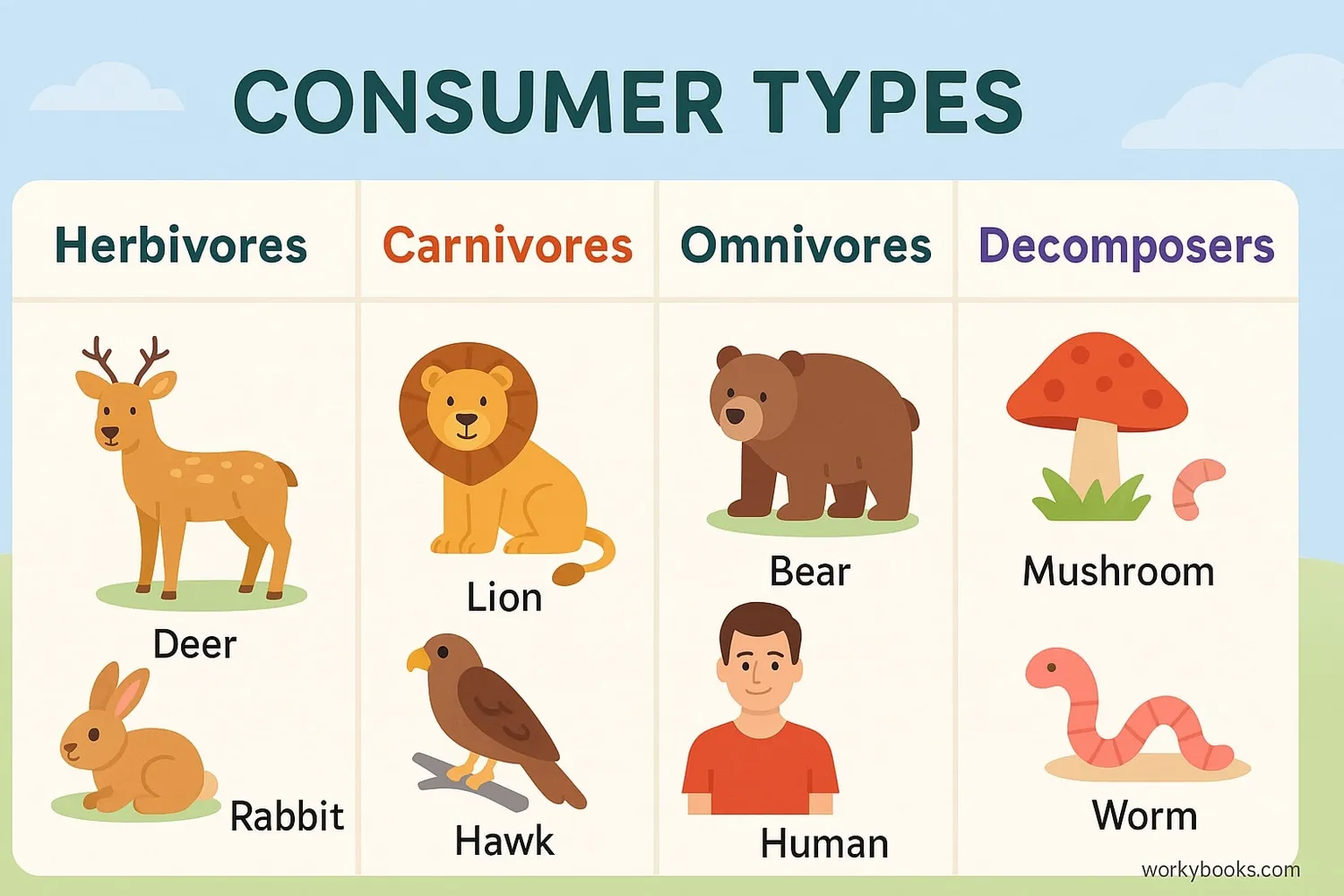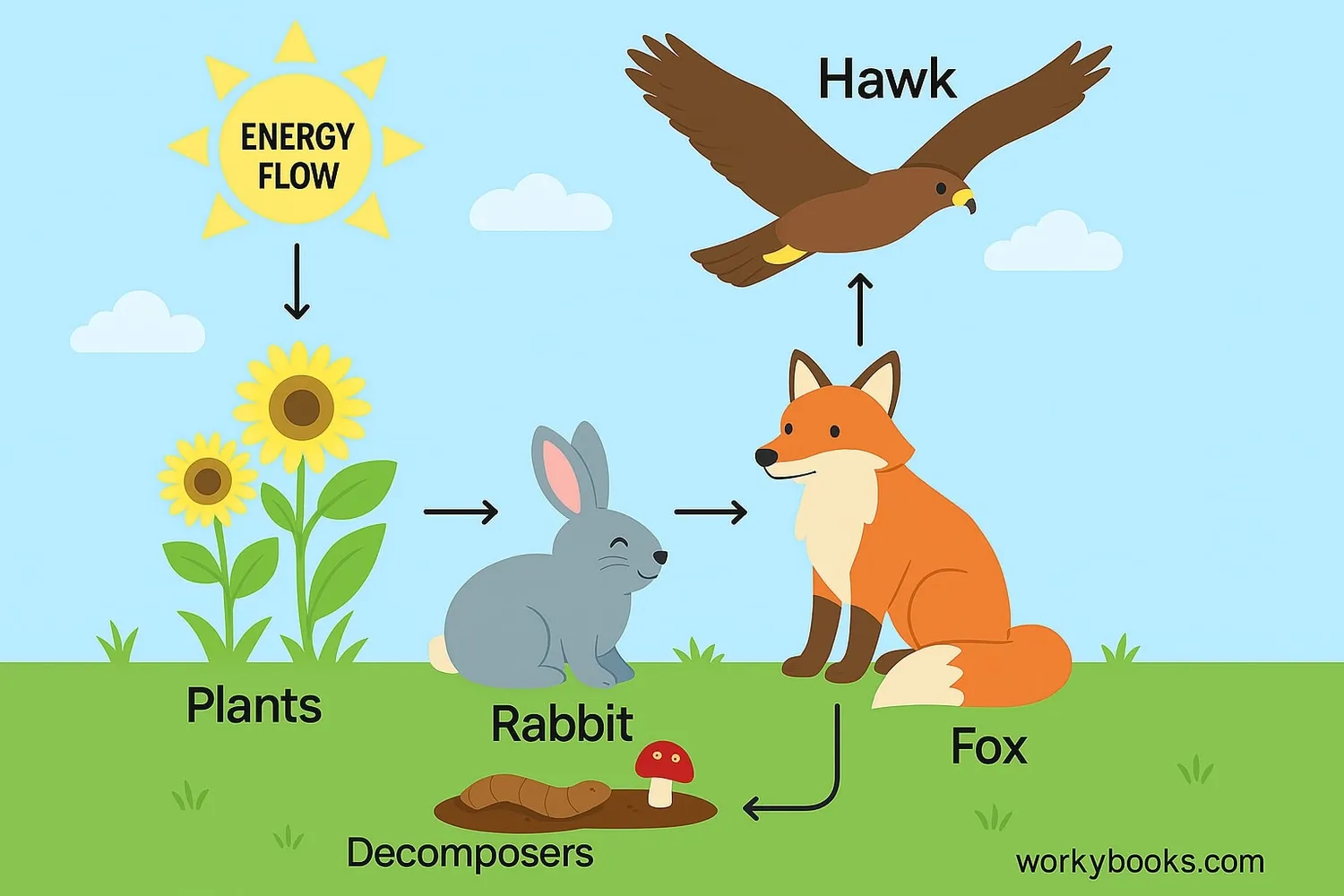Consumers - Definition, Examples, Quiz, FAQ, Trivia
Discover how animals get energy by eating other organisms in ecosystems
What is a Consumer?

In ecology, a consumer is an organism that gets its energy by eating other organisms. Unlike plants that make their own food, consumers must consume other living things to survive.
Think of consumers as the "eaters" in nature. They can't make their own food through photosynthesis like plants do. Instead, they get energy by eating plants, animals, or both. This makes them an essential part of every food chain and ecosystem.
Key Fact!
All animals are consumers! Even plant-eating animals like deer and cows need to consume other organisms (plants) to get energy.
Types of Consumers

Consumers are classified based on what they eat and their position in the food chain. Here are the main types:
Herbivores (Primary Consumers)
Animals that eat only plants. Examples: deer, rabbits, cows.
Carnivores (Secondary/Tertiary Consumers)
Animals that eat other animals. Examples: lions, hawks, wolves.
Omnivores
Animals that eat both plants and animals. Examples: bears, humans, raccoons.
Scavengers
Animals that eat dead organisms. Examples: vultures, hyenas.
Decomposers
Organisms that break down dead matter. Examples: fungi, bacteria.
Consumers can also be classified by their position in the food chain:
Primary consumers eat producers (plants).
Secondary consumers eat primary consumers.
Tertiary consumers eat secondary consumers.
Apex predators are at the top with no natural predators.
Role in Ecosystems

Consumers play vital roles in ecosystems:
Energy Transfer
They move energy from plants (producers) through the food chain
Population Control
They help control populations of other organisms
Nutrient Cycling
They return nutrients to the ecosystem through waste and decomposition
Without consumers, ecosystems would collapse:
• Plants would overgrow without animals eating them
• Dead organisms would accumulate without decomposers
• Energy would not flow through food chains
• Nutrients wouldn't be recycled properly
Consumers help maintain the balance of nature by connecting different parts of the ecosystem.
Consumer Quiz
Test your knowledge about consumers in food chains! Answer all 5 questions to see how much you've learned.
Frequently Asked Questions
Here are answers to common questions about consumers in food chains:
Consumer Trivia
Discover fascinating facts about consumers in ecosystems!
Energy Loss
Only about 10% of energy transfers from one consumer level to the next. This is why food chains rarely have more than 4-5 levels!
Ocean Giants
The blue whale, the largest animal ever, is a consumer that eats tiny krill. It can consume up to 8,000 pounds of krill per day during feeding season!
Plant Consumers
Some plants like the Venus flytrap are consumers too! They trap and digest insects to get nutrients missing from their soil environment.
Human Impact
Humans are the most widespread apex predators on Earth. Our position at the top of food chains gives us great responsibility for ecosystem health.


